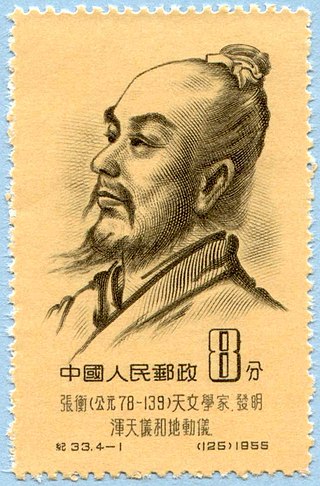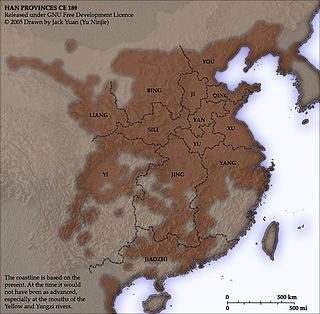
Year 125 (CXXV) was a common year starting on Sunday of the Julian calendar. At the time, it was known as the Year of the Consulship of Paullinus and Titius. The denomination 125 for this year has been used since the early medieval period, when the Anno Domini calendar era became the prevalent method in Europe for naming years.
Year 106 BC was a year of the pre-Julian Roman calendar. At the time it was known as the Year of the Consulship of Caepio and Serranus and the Fifth Year of Yuanfeng. The denomination 106 BC for this year has been used since the early medieval period, when the Anno Domini calendar era became the prevalent method in Europe for naming years.
AD 1 (I) or 1 CE was a common year starting on Saturday or Sunday, a common year starting on Saturday by the proleptic Julian calendar, and a common year starting on Monday by the proleptic Gregorian calendar. It is the epoch year for the Anno Domini (AD) Christian calendar era, and the 1st year of the 1st century and 1st millennium of the Christian or Common Era (CE).
AD 3 (III) or 3 AD was a common year starting on Monday or Tuesday of the Julian calendar and a common year starting on Monday of the proleptic Julian calendar. In the Roman Empire, it was the Year of the Consulship of Lamia and Servilius. The denomination "AD 3" for this year has been used since the early medieval period when the Anno Domini calendar era became the prevalent method in Europe for naming years.
The 140s decade ran from January 1, 140, to December 31, 149.
Year 145 (CXLV) was a common year starting on Thursday of the Julian calendar. At the time, it was known as the Year of the Consulship of Hadrianus and Caesar. The denomination 145 for this year has been used since the early medieval period, when the Anno Domini calendar era became the prevalent method in Europe for naming years.
Year 150 (CL) was a common year starting on Wednesday of the Julian calendar. In the Roman Empire, it was known as the Year of the Consulship of Squilla and Vetus. The denomination 150 for this year has been used since the early medieval period, when the Anno Domini calendar era became the prevalent method in Europe for naming years.
Year 156 (CLVI) was a leap year starting on Wednesday of the Julian calendar. At the time, it was known as the Year of the Consulship of Silvanus and Augurinus. The denomination 156 for this year has been used since the early medieval period, when the Anno Domini calendar era became the prevalent method in Europe for naming years.
Year 105 BC was a year of the pre-Julian Roman calendar. At the time it was known as the Year of the Consulship of Rufus and Maximus and the Sixth Year of Yuanfeng. The denomination 105 BC for this year has been used since the early medieval period, when the Anno Domini calendar era became the prevalent method in Europe for naming years.

Year 100 BC was a year of the pre-Julian Roman calendar. At the time it was known as the Year of the Consulship of Marius and Flaccus and the First Year of Tianhan. The denomination 100 BC for this year has been used since the early medieval period, when the Anno Domini calendar era became the prevalent method in Europe for naming years.

Year 189 (CLXXXIX) was a common year starting on Wednesday of the Julian calendar. At the time, it was known as the Year of the Consulship of Silanus and Silanus. The denomination 189 for this year has been used since the early medieval period, when the Anno Domini calendar era became the prevalent method in Europe for naming years.
Year 161 (CLXI) was a common year starting on Wednesday of the Julian calendar. At the time, it was known as the Year of the Consulship of Caesar and Aurelius. The denomination 161 for this year has been used since the early medieval period, when the Anno Domini calendar era became the prevalent method in Europe for naming years.
Year 168 (CLXVIII) was a leap year starting on Thursday of the Julian calendar. At the time, it was known as the Year of the Consulship of Apronianus and Paullus. The denomination 168 for this year has been used since the early medieval period, when the Anno Domini calendar era became the prevalent method in Europe for naming years.
Year 288 (CCLXXXVIII) was a leap year starting on Sunday of the Julian calendar. In the Roman Empire, it was known as the Year of the Consulship of Maximian and Ianuarianus. The denomination 288 for this year has been used since the early medieval period, when the Anno Domini calendar era became the prevalent method in Europe for naming years.
Year 190 (CXC) was a common year starting on Thursday of the Julian calendar. At the time, it was known as the Year of the Consulship of Aurelius and Sura. The denomination 190 for this year has been used since the early medieval period, when the Anno Domini calendar era became the prevalent method in Europe for naming years.
Year 172 (CLXXII) was a leap year starting on Tuesday of the Julian calendar. At the time, it was known as the Year of the Consulship of Scipio and Maximus. The denomination 172 for this year has been used since the early medieval period, when the Anno Domini calendar era became the prevalent method in Europe for naming years.

Year 1 BC was a common year starting on Friday or Saturday in the Julian calendar and a leap year starting on Thursday in the proleptic Julian calendar. It was also a leap year starting on Saturday in the Proleptic Gregorian calendar. At the time, it was known as the Year of the Consulship of Lentulus and Piso. The denomination 1 BC for this year has been used since the early medieval period when the Anno Domini calendar era became the prevalent method in Europe for naming years. The following year is AD 1 in the widely used Julian calendar and the proleptic Gregorian calendar, which both do not have a "year zero".
Year 110 BC was a year of the pre-Julian Roman calendar. At the time it was known as the Year of the Consulship of Rufus and Albinus and the First Year of Yuanfeng. The denomination 110 BC for this year has been used since the early medieval period, when the Anno Domini calendar era became the prevalent method in Europe for naming years.
Year 143 BC was a year of the pre-Julian Roman calendar. At the time it was known as the Year of the Consulship of Pulcher and Macedonicus. The denomination 143 BC for this year has been used since the early medieval period, when the Anno Domini calendar era became the prevalent method in Europe for naming years.
Year 124 BC was a year of the pre-Julian Roman calendar. At the time it was known as the Year of the Consulship of Longinus and Calvinus and the Fifth Year of Yuanshuo. The denomination 124 BC for this year has been used since the early medieval period, when the Anno Domini calendar era became the prevalent method in Europe for naming years.



